Most pictures fade away only moments after they see the light of day. Unnoticed, they sink into insignificance, like a joke we are apt to forget once we have heard its trivial punch line. Or like some people, who have left no traces except in the filing cards of an administrated life that somehow slipped through the cracks. Several recent series of drawings by Eugenio Dittborn, who has been one of the most influential voices in Latin America’s art scene since the 1980s, are dedicated to the brief and ephemeral appearance and disappearance of pictures, people—and jokes.
Die meisten Bilder verschwinden schon, sobald sie das Tageslicht erblicken. Sie versinken unbeachtet in der Bedeutungslosigkeit. So wie mancher Witz, den man gleich nach seiner kleinen Pointe schon vergisst. So wie manche Menschen, deren Spur sich nirgends findet als in den Karteikarten eines verwalteten Lebens, das irgendwohin verschwand. Eugenio Dittborn, seit den Achtzigerjahren eine der einflussreichsten Stimmen der Kunst Lateinamerikas, hat jüngst dem kurzen, ephemeren Aufscheinen und Verschwinden von Bildern, Menschen – und Witzen – einige Serien von Zeichnungen gewidmet.
Dittborn gathers the debris along the highways of visual culture: photographs and illustrations from second-rate magazines, anonymous drawings, found scribbles. Under the draftsman’s hand, the gleaned motifs resurface in variations. Tracing lines on the paper, Dittborn builds a new presence and history for them. Black ink and white “liquid paper” reveal and conceal themselves on the surface of the composition, forever approaching a figural definition that is never assured and that will be transmuted in the next step.
It is a melancholy figure. Each picture starts out as a resumption of a theme that was never really interesting to anyone. Each motif derives from a source that has run dry, and now, bereft of its history, it evolves into a new and disjointed sequence of instants. The theme cuts to the heart of Dittborn’s oeuvre: under the Pinochet dictatorship, thousands of Chileans vanished without a trace. Earlier, colonial regimes had erased lives and their stories. Culture and identity—both have repeatedly been effaced, swallowed up by power and violence, marginalized.
Beginning in 1986, Eugenio Dittborn responded to this history by devising a distinctive genre, the so-called Airmail Paintings, which brought him international renown. He folded his pictures, which he could not show in Chile due to censorship, and mailed them to recipients abroad, who unfolded them and presented them in exhibitions all over the world. The works bore the marks of the constant uncertainty in a society in which dissimulating and witnessing, trying to forget and conjecturing, averring and disagreeing, dying and smiling to oneself defined the asynchronous rhythm of everyday life under a repressive regime.
The same rhythm informs Dittborn’s drawings. They are the return of something vague that looms on the edge of perception and now attains form. Until the next form overtakes the first. None of this is funny in and of itself. What is funny, however, is the way the motifs drift when the draftsman allows them the room they need to evolve as they will. And how a stroke of the pen and another stroke, tiptoeing around the question of visibility, can build up to an absurd struggle over perspectives and meanings. A struggle over deception, assertion, and ignorance, over faulty logic, and, yes, also over the spirit of anarchy.
Text: Alexander Koch / Translation: Gerrit Jackson
Photos: Ladislav Zajac
Dittborn nimmt auf, was am Straßenrand der Bildwürdigkeit liegt. Fotos und Illustrationen aus zweitklassigen Zeitschriften, anonyme Zeichnungen, gefundene Zettel. Unter der Hand des Zeichners kehren die aufgelesenen Motive in Variationen wieder. Dittborn baut ihnen mit Linien eine neue Präsenz und Geschichte auf das Papier. Schwarze Tusche und weißes Liquid Paper (das „flüssige Papier“ ist auf Deutsch weniger hübsch als Tipp-Ex bekannt) zeigen und verbergen sich auf der Bildfläche, sind immer unterwegs zu einer Figur, die niemals sicher ist und im nächsten Schritt eine andere sein wird
Es ist eine melancholische Figur. Jedes Bild beginnt als Fortsetzung eines Themas, das niemanden wirklich interessierte. Jedes Motiv geht zurück auf eine Quelle, die nicht mehr fließt, und entwickelt sich nun ohne seine Geschichte weiter zu einer neuen, sprunghaften Abfolge von Augenblicken. Das Thema liegt im Zentrum von Dittborns Werk: Während der Pinochet-Diktatur in Chile verschwanden Tausende spurlos. Zuvor radierten Kolonialregime Leben und ihre Geschichten aus. Kultur und Identität – beide wurden immer wieder zum Verschwinden gebracht, von Macht und Gewalt verschluckt, marginalisiert
Vor diesem Hintergrund entwarf Eugenio Dittborn ab 1986 eine eigene Werkform, seine Airmail Paintings, die ihn international bekannt machten. Es waren Bilder, die zusammengefaltet auf Reisen gingen, um auf Ausstellungen rings um die Welt entfaltet und gesehen zu werden, während zu Hause, in Chile, Zensur galt. Was sie zeigten, waren die Spuren des Ungewissen in einer Gesellschaft, in der das Verbergen und Bezeugen, Verdrängen und Vermuten, Behaupten und Widersprechen, Sterben und Schmunzeln den asynchronen Rhythmus des Alltags unter einem Regime der Repression darstellten.
Es ist dieser Rhythmus, der auch Dittborns Zeichnungen prägt. Sie sind die Wiederkehr des Ungefähren, das am Rand der Wahrnehmung liegt und jetzt Form wird. Bis die nächste Form die erste einholt. Das alles ist an sich nicht witzig. Witzig ist indes, wohin es die Motive treibt, wenn der Zeichner ihnen eigenen Raum gibt, sich frei von ihrem Ursprung zu entwickeln. Und wie ein Strich und ein anderer Strich den Tanz um die Sichtbarkeit bis zu einem absurden Ringen um Perspektiven und Bedeutungen treiben können. Ein Ringen um Trug, Behauptung und Nichtwissen, falsche Logik und, ja, auch anarchischen Geist.
Text: Alexander Koch
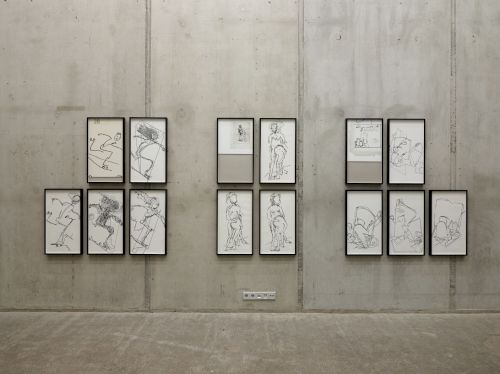
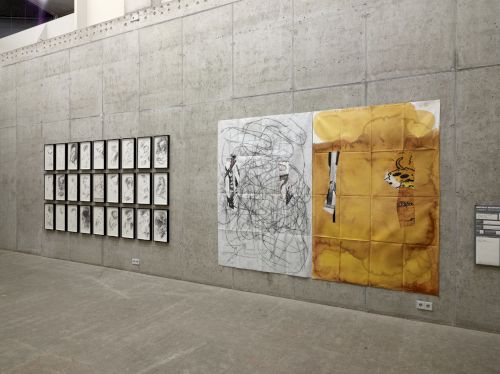
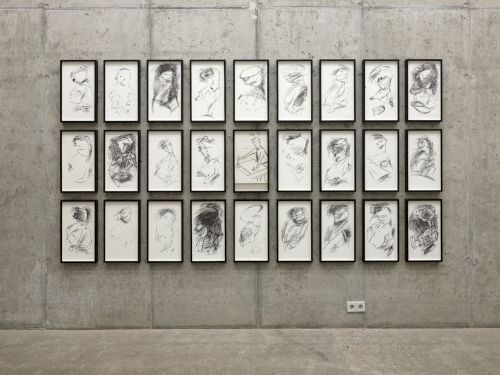

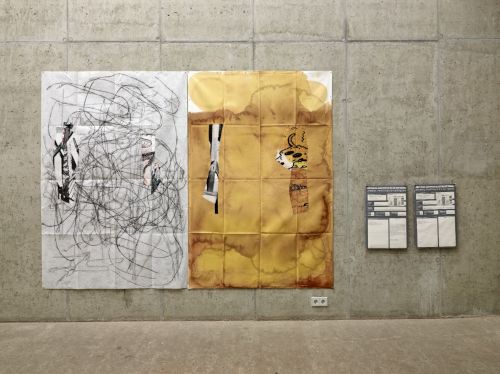
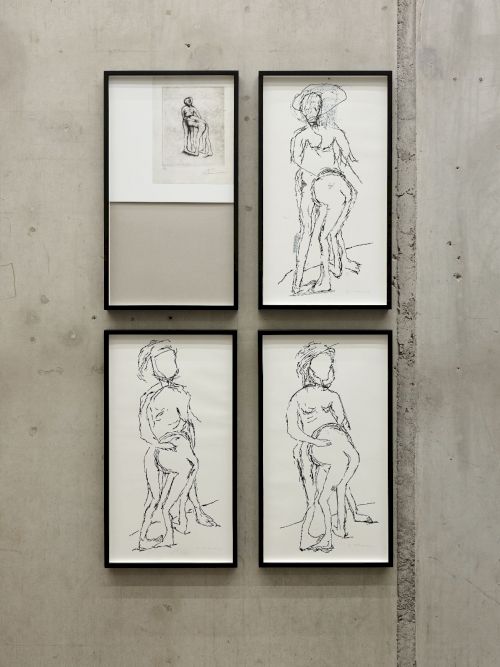
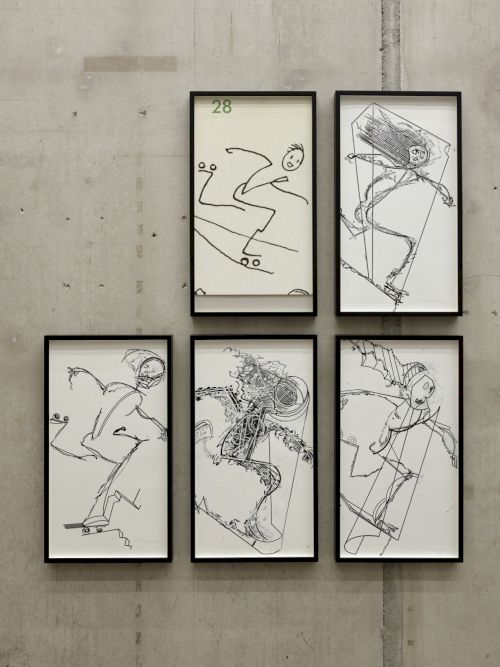
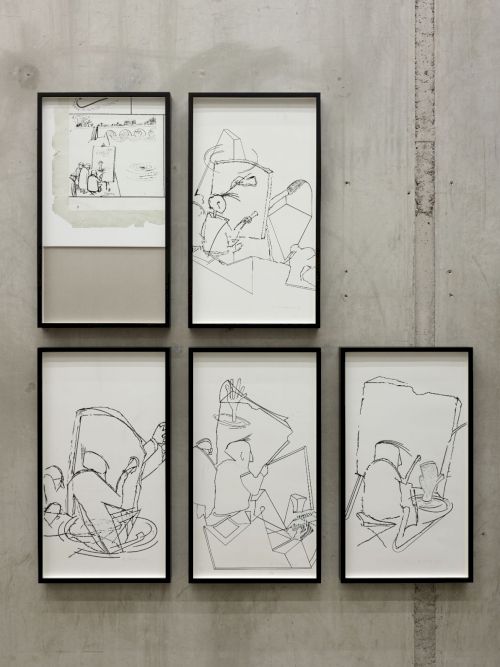
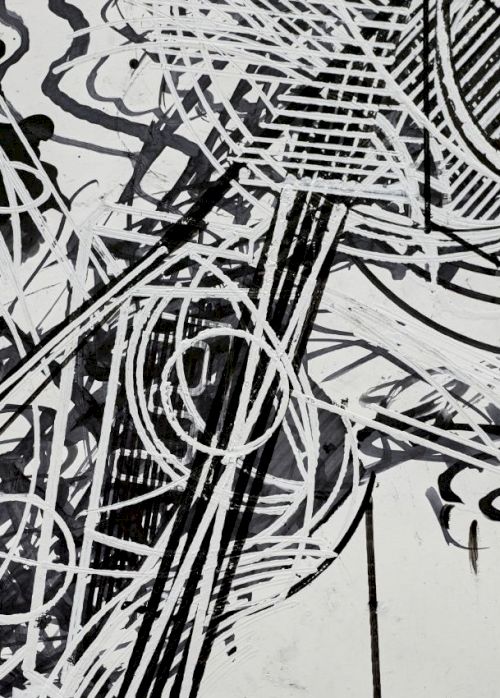

- Current
- Upcoming
- 2025
- 2024
- 2023
- 2022
- 2021
- 2020
- 2019
- 2018
- 2017
- 2016
- 2015
- 2014
- 2013
- 2012
- 2011
- 2010
- 2009